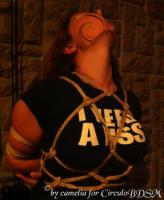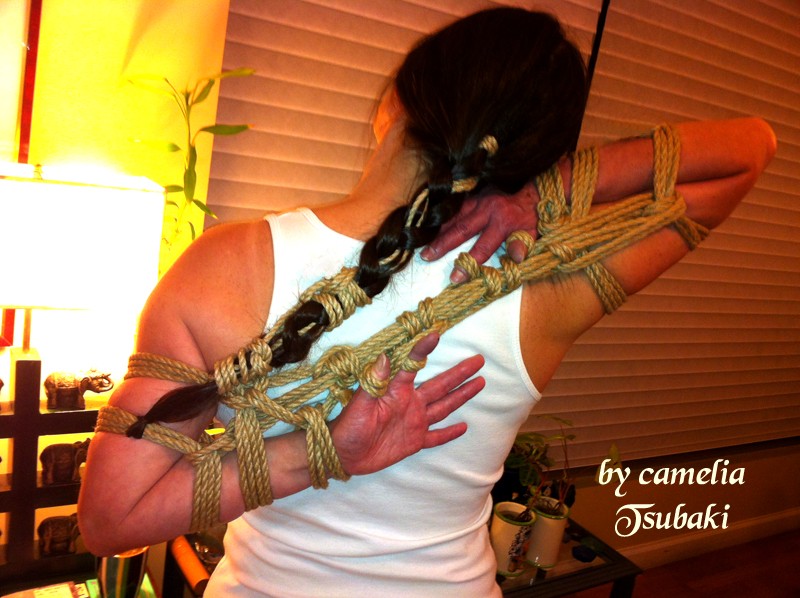Copyright 2011 by Haru Tsubaki. All rights reserved. No part of this publication may be reproduced, distributed, or transmitted in any form or by any means, including photocopying, recording, or other electronic or mechanical methods, without the prior written permission of the publisher
Honour matters: Rigger and model interaction (Part III)
“Rigger’s honour is reflected in the kind of patterns and ties that he proposes”
- In any Shibari/Kinbaku session the one who should shine is the model and never the rigger. It’s considered an honour matter for the rigger to only show himself through his models and the reactions that he obtains from them with his ropes. Rigger’s honour is perceived in those performances where he shows his skill off by achieving the balance between immobility, the easiness of the suspension and the beauty as a whole through model’s expressions. That’s the reason why an experienced rigger gets his main focus in a profound and constant visual and energetic contact with the model, letting the warm rope embrace flow naturally.
- When the rigger achieves certain level, it’s considered an honour matter to include the third rope in the takatekote (高手小手), as it brings honour to the rigger, the model, his Sensei, and the performance itself (besides it helps to bring a wider support area, added comfort and security).
- At a good rigging level it’s considered an dishonour for the model and the viewers if the rigger would leave any rope extension visible in the front part of the model.
- Simple suspensions where the model hangs from a single point would add high spectacularity to the show, but would not show any honour for the rigger if they’re the only proposed figure. The only thing that shows off in that case is the high pain tolerance and/or masochism of the model. You don’t receive any honour as a rigger in performances where it’s spectacularity is only based on model’s pain tolerance.
- Any extreme position and any single point suspension should be achieved in a progressive sequence, in such a way that the rigger gets the model to it in a thoughtful, progressive and ordered consecutive transition to finally get to the model to such final position that he wanted to show.
- There are a number of tying patterns in Shibari/Kinbaku that have hundreds of years of history behind since they started to be used in the feudal shogun era. Thus, through oriental eyes, these well known patterns, their historical background and their intrinsic beauty, entail a great honour for the rigger and the model that´s showing them:
- the “hishi or Hishigata” (diamonds),

- the “kikkou or Nyugarame” (turtle shell), renowned by their hexagonal patterns.
- the “ebi“: The “shrimp” tie, where the model sits “loto style” (crossed legs) and the back is tied near the ankles in a very hunched and submissive position.
- the “tsuri“or tsurizeme: The second classic torture technique used in Tokugawa era in Japan that has became nowadays in the cornerstone of today’s Shibari/Kinbaku.
- Other ties patterns as imo mushi, kaikyaku kani and teppo are much more recent and come from times where it was usually expected that renowned rope artists (bakushi), such as Itoh Seiyu and Minomura Kou, would name their ties in the same way that other artists would name their paintings or sculptures. These patterns, even when they do not have that ancient historic background behind, are considered highly honorable as both Itoh Seiyu as Minomura Kou are considered the fathers of what we call Shibari Kinbaku today.
Note from the author: It’s considered disrespectful to use Japanese terms or concepts to describe occidental bondage practices or ties
Next article in this series is: Shibari Kinbaku (part IV): The learning path were I address concepts related to the student/Sensei relationship and the Shibari/Kinbaku learning.


